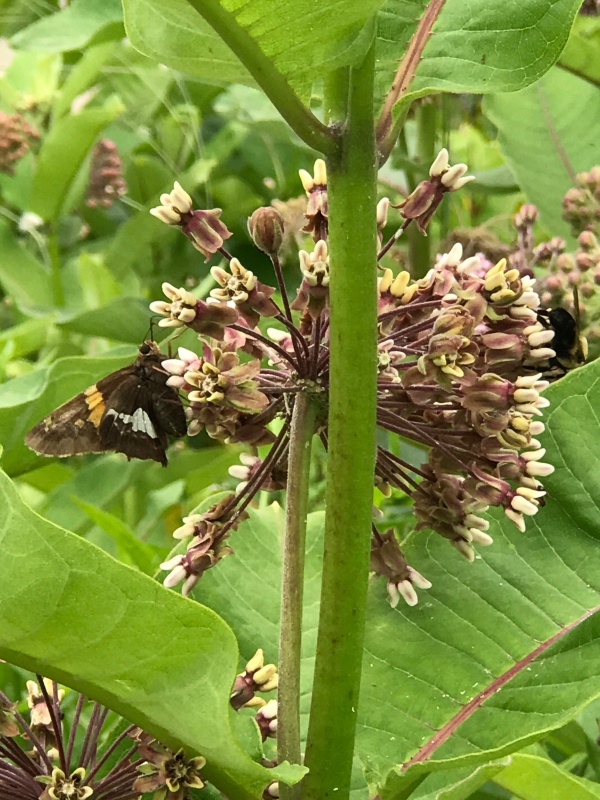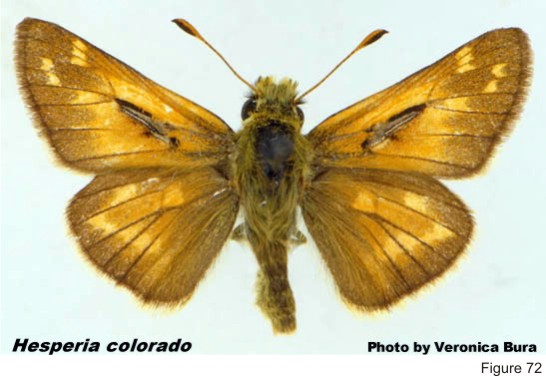By Reba Kocher
Listen to this blog post here: Skippers.mp3
Lepidoptera month may be over but I have a few more Lepidoptera posts for you guys. Today, I want to tell you about Skippers. Skippers get their names from their quick, darting habits, and they can fly 20mph! They are such an interesting family of Lepidoptera because they are different from moths and butterflies. There are 3,500 species worldwide, with the greatest diversity in Central and South America.
A cute little Skipper found at Clary Gardens
Even though they are sometimes classified as butterflies, scientists believe that they are an intermediate between butterflies and moths. This is because they have characteristics of both families (click here for more information about intermediate species https://evolution.berkeley.edu/evolibrary/article/_0_0/lines_03). Skippers are diurnal and have stocky, fuzzy bodies similar to moths with large compound eyes (for more information on compound eyes click here https://en.wikipedia.org/wiki/Compound_eye). Their wings are smaller in comparison to their thick bodies, and they lack wing-coupling structures called frenula that are found on moths. While resting, their wings are angled upwards or spread out and are rarely folded up completely like resting moths and butterflies. Like butterflies, their wings are rounded with sharply tipped forewings. Their antennae tips are modified into narrow hooks. Like moths they are mostly dull colors like browns, greys, and blacks, and sometimes they have patches of blues and greens. Males usually have a black striped patch of scent scales on their forewings. Skipper species are so similar that they cannot even be distinguished in the field by experts. Only with dissection and microscopic exams of the genitals can they be categorized. This is because each species has characteristic structures that prevent mating with other Skippers. So if you see a Skipper in the wild and are struggling to find it’s species, don’t worry! Scientists struggle with it too! Now you know a little about Skippers, go out and find some. Take photos and tag us. We love seeing your pictures!

A Skipper resting
References & Further Readings
https://www.britannica.com/animal/skipper-insect-Lepidoptera-order
https://www.desertusa.com/animals/moth-butterfly-skipper.html
https://donnallong.com/animals/butterflies/skipper-butterfly-family/


